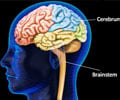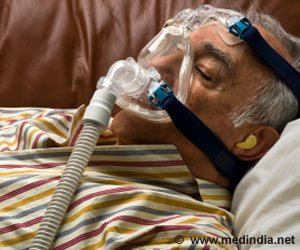Accurate predicting of important clinical outcomes in hospitalized patients with a new tip sheets score is now possible, as published in Annals of Internal Medicine.

A new delirium severity score proves accurate for predicting important clinical outcomes in hospitalized patients, according to an article published in Annals of Internal Medicine. Delirium is common among hospitalized patients and is associated with poor outcomes. The Confusion Assessment Method (CAM) is a standardized, validated measure that is widely used to screen for the presence of delirium but not its severity. Researchers hypothesized that adding a valid delirium severity measure to the CAM algorithm would be a strong independent predictor of adverse outcomes, such as prolonged hospital stay, functional and cognitive decline, nursing home placement, death, and high health care costs. They developed the CAM-S scoring system and conducted a validation analysis on two independent cohorts – 300 patients aged 70 years and older scheduled for major surgery and 919 medical patients aged 70 and older. Patients with CAM-diagnosed delirium were given a score for features such as inattention, disorganized thinking, and altered level of consciousness. The maximum CAM-S score given during hospitalization was evaluated against hospital and post-hospital outcomes. The study showed that the CAM-S has good psychometric properties; high inter-rater reliability; and strong association with clinical outcomes related to delirium. The researchers conclude that the CAM-S is a reliable means for rating delirium severity and could be helpful in both research and clinical settings.
Note: The URL will go live at 5:00 p.m. on Monday, April 14 and can be included in news stories. For an embargoed PDF, please contact Megan Hanks or Angela Collom. To interview the lead author, please contact Dawn Peters at [email protected] or 978-985-7745.
2. U.S. Survey: Obesity to blame for dramatic rise in diabetes cases
An 'alarming' rise in obesity has contributed to a dramatic increase in the prevalence of diabetes in the U.S, according to a new study published in Annals of Internal Medicine. Researchers examined the prevalence of diabetes, prediabetes, and glycemic control in 43,439 adults followed by the National Health and Nutrition Examination Survey (NHANES) from 1988 to 1994 and 1999 to 2010. Diabetes was either self-reported (previously diagnosed) or defined by a single HbA1c level of 6.5 percent or greater or a fasting plasma glucose level of 7 mmol/L or greater. The survey showed that demographic characteristics of the U.S. population remained relatively stable over the study periods, with the exception of changes in the racial or ethnic makeup of the population. The prevalence of total confirmed diabetes (diagnosed or undiagnosed) rose from 5.5 percent in 1988 to 1994, 7.6 percent in 1999 to 2004, and 9.3 percent in 2005 to 2010. Glycemic control in people with diagnosed diabetes improved, yet a sizeable proportion of people with diagnosed diabetes still had hemoglobin A1c levels greater than 7 percent. The proportion of diabetes cases that are undiagnosed decreased over the study years, which the authors speculate is likely due to the improvements in screening and diagnoses processes. The mean BMI of the U.S. adult population also increased significantly over the study period and the prevalence of obesity increased from 21.2 percent in 1988 to 1994 to 32 percent among persons without diagnosed diabetes in 2005 to 2010. The authors suggest that the increase in diabetes rates can be explained by the increase in obesity, and the authors of an accompanying editorial also attribute the increase in diabetes prevalence to dietary changes and lack of physical activity.
Shock therapy improves pain and function in patients with chronic calcific shoulder tendinitis, according to an article published in Annals of Internal Medicine. Rotator cuff tendonitis is one of the most common causes of shoulder pain and may present with or without calcifications. There is little evidence to suggest that conventional therapies, such as rest, ice, nonsteroidal anti-inflammatory drugs, physical therapy, and subacromial corticosteroid injections can effectively ease pain or restore function. Calcific tendinitis, in particular, may be more difficult to manage and may require surgery. Extracorporeal shockwave therapy (ESWT), which uses sound waves of high or low energy that impart rapid fluctuations of pressure to tissues, has been suggested as an alternative treatment to expensive and risky surgical interventions. Researchers reviewed 28 published randomized, controlled trials to assess the efficacy of ESWT in patients with calcific and noncalcific tendinitis. For calcific tendinitis, high-energy ESWT seemed to improve shoulder pain, function, and calcifications, whereas low-energy ESWT seemed to improve only function. Conversely, ESWT did not appear to be effective in treating noncalcific tendinitis, regardless of energy dose. The evidence suggests that ESWT is a safe treatment, with no serious adverse effects reported.
Note: The URL will go live at 5:00 p.m. on Monday, April 14 and can be included in news stories. For an embargoed PDF, please contact Megan Hanks or Angela Collom. To interview the lead author, please contact Jeremy Lechan at [email protected] or 617-636-0104.
Source-Eurekalert
 MEDINDIA
MEDINDIA




 Email
Email





